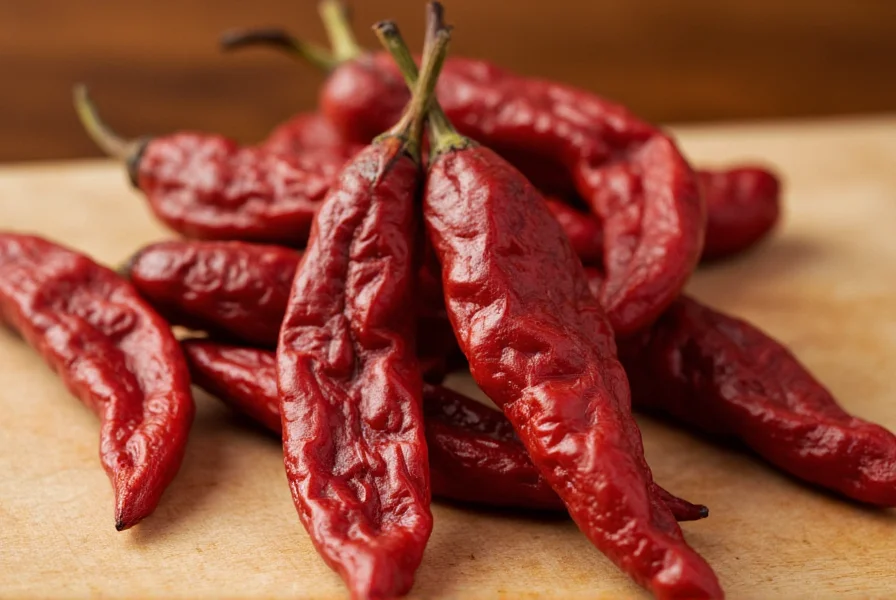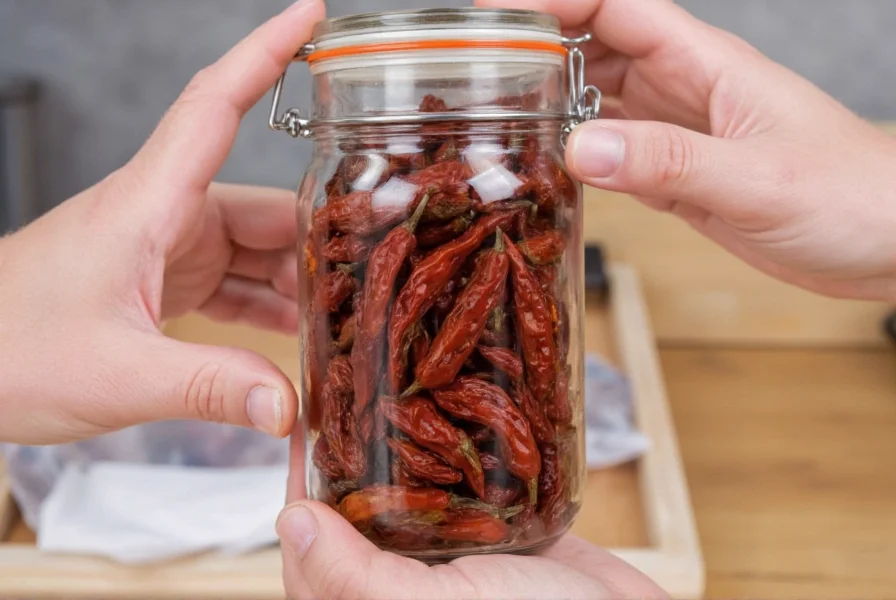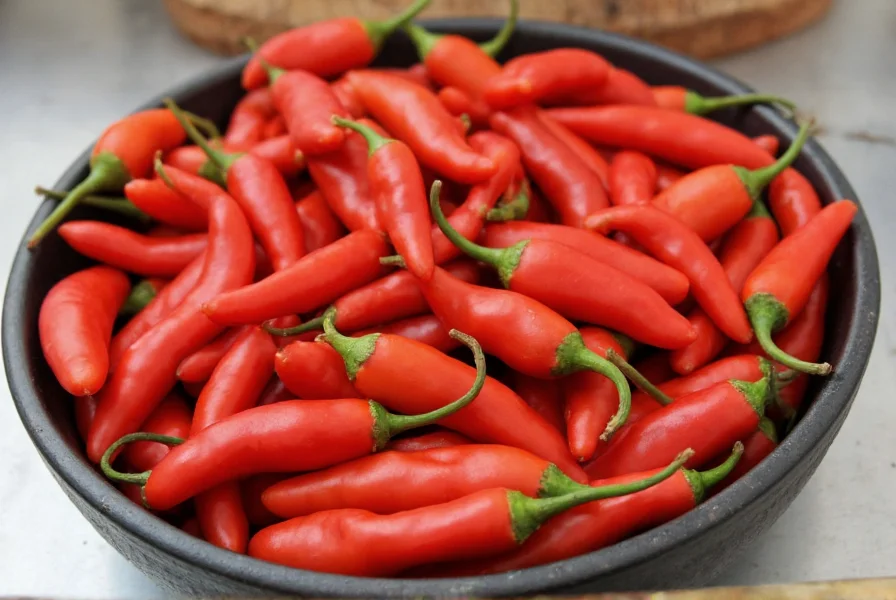When exploring Mexican cuisine, few ingredients deliver such nuanced flavor as the ancho pepper. As the dried form of the poblano pepper, anchos transform from fresh green chilies into deep red, wrinkled treasures with a distinctive sweet-smoky profile. Understanding this staple ingredient unlocks authentic cooking possibilities while accommodating various heat preferences.
What Exactly Is an Ancho Pepper?
The term "ancho" means "wide" in Spanish, perfectly describing this pepper's broad, heart-shaped form. Fresh poblano peppers ripen from green to deep red before being carefully dried to become anchos. This drying process concentrates their natural sugars while developing complex flavor compounds that fresh poblanos lack.
Unlike many dried chilies that become intensely hot, anchos maintain a mild heat level—comparable to a bell pepper with just a gentle warmth. Their Scoville rating of 1,000-2,000 units places them well below jalapeños (2,500-8,000 units) and far beneath habaneros (100,000-350,000 units). This approachable heat makes them ideal for introducing chili flavors to those sensitive to spice.
| Pepper Characteristic | Ancho Pepper Details |
|---|---|
| Origin | Dried poblano pepper (Capsicum annuum) |
| Heat Level | 1,000-2,000 Scoville Heat Units (mild) |
| Flavor Profile | Dried fruit, coffee, chocolate, subtle earthiness |
| Common Forms | Whole dried, powdered, paste |
| Substitutes | Guajillo (similar heat, different flavor), pasilla, mulato |
Culinary Applications of Ancho Peppers
Ancho peppers form the foundation of many traditional Mexican dishes, particularly complex sauces where their fruity depth shines. When rehydrated and blended, they create smooth, rich bases perfect for:
- Mole sauces - The backbone of many regional moles, especially Oaxacan varieties
- Adobo marinades - Combined with vinegar and spices for meats
- Salsas - Adds depth to roasted tomato or fruit salsas
- Stews and braises - Enhances beans, carnitas, and chilis
Professional chefs often toast whole anchos before rehydrating to intensify their natural sugars—a technique home cooks can easily replicate. Simply place dried peppers in a dry skillet over medium heat for 30-60 seconds per side until fragrant but not burnt. This step dramatically enhances their complex flavor profile.

Working with Ancho Peppers: Practical Tips
Successfully incorporating ancho peppers into your cooking requires understanding proper preparation techniques. Unlike fresh chilies, dried anchos need rehydration before use in most applications:
- Remove stems and seeds (the seeds contain most heat)
- Toast lightly in dry skillet for enhanced flavor
- Soak in hot water for 15-20 minutes until pliable
- Blend with soaking liquid for smooth sauces
For quick recipes, ancho powder provides convenient flavor without preparation time. However, freshly prepared whole peppers deliver superior depth. When substituting, remember that one dried ancho pepper typically equals one tablespoon of powder.
Nutritional Benefits and Storage
Beyond their culinary value, ancho peppers offer notable nutritional benefits. They're rich in vitamin A (from capsaicinoids), vitamin C, and various antioxidants. The drying process concentrates these nutrients while developing additional beneficial compounds through enzymatic changes.
Proper storage maintains quality for up to one year:
- Store whole dried peppers in airtight containers away from light
- Keep in cool, dark pantry (not the refrigerator)
- Check periodically for moisture or mold
- Grind only what you'll use within 2-3 months for best flavor

Finding Quality Ancho Peppers
When selecting anchos, look for deep, uniform red color without dark spots. High-quality specimens should feel leathery but flexible—not brittle or excessively dry. Avoid peppers with signs of insect damage or mold. Specialty Mexican markets typically offer the freshest selection, though well-stocked supermarkets increasingly carry them in Latin ingredient sections.
For authentic Mexican cooking with ancho peppers, understanding their unique characteristics transforms ordinary dishes into extraordinary culinary experiences. Whether crafting traditional mole, enhancing everyday stews, or experimenting with new flavor combinations, these versatile chilies provide complexity without overwhelming heat—making them indispensable in any well-equipped kitchen.
Frequently Asked Questions
What's the difference between ancho and poblano peppers?
Ancho peppers are simply dried poblano peppers. Fresh poblanos are green, mild chilies that turn red when fully ripe. When these ripe poblanos are dried, they become anchos with a deeper, more complex flavor profile and slightly different heat characteristics.
Can I substitute ancho pepper for chipotle in recipes?
While both are dried Mexican chilies, they have distinct flavor profiles. Ancho offers fruitiness with mild heat, while chipotle (smoked jalapeño) provides smokiness with more heat. For similar heat level, use guajillo peppers; for similar smokiness, add a pinch of smoked paprika to ancho-based recipes.
How do I rehydrate ancho peppers properly?
First remove stems and seeds, then toast lightly in a dry skillet. Place in a bowl and cover with hot (not boiling) water. Weight down with a small plate to keep submerged. Soak 15-20 minutes until pliable but not mushy. Reserve soaking liquid for sauces to capture maximum flavor.
Are ancho peppers suitable for people sensitive to spicy foods?
Yes, ancho peppers rank among the mildest dried chilies at 1,000-2,000 Scoville units. Their heat is subtle and balanced by rich fruit flavors. Removing seeds and membranes further reduces heat while preserving flavor, making them ideal for those preferring minimal spiciness.
What traditional Mexican dishes feature ancho peppers prominently?
Ancho peppers are essential in mole poblano, adobo sauces, chiles en nogada, and many regional stews. They form the base for authentic Mexican chocolate sauces and appear in traditional salsas like salsa de árbol. Their versatility makes them fundamental to Oaxacan and Pueblan cuisines specifically.











 浙公网安备
33010002000092号
浙公网安备
33010002000092号 浙B2-20120091-4
浙B2-20120091-4